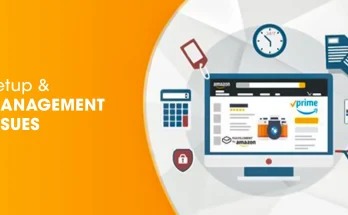In today’s fast-moving and highly competitive B2B landscape, accurate segmentation of prospective customers is no longer a luxury but a necessity. Since marketing and sales forces are worried about maximizing conversion ratios and optimizing channels of information distribution, quality and accuracy of company data have become prerequisites for understanding the difference. The correct source of firmographic information allows businesses to segment prospective customers by company size, industry, revenue, geography, employee count, level of technology and organisational structure, allowing them to create highly targeted, relevant and productive interaction strategies.
The advantage of firmographic segmentation is that it has the ability to capture the reality of business on the ground. Unlike demographic data, which is characterized by individual characteristics, firmographic data provider to companies’ structure and business processes. The contrast allows B2B marketers to align message, product positioning, and promotion strategy with real need and capability of the target account. Whether launching an ad campaign or establishing sales territory planning, access to clean, up-to-date company data greatly enhances decision-making.
One of the leading geodetic data suppliers in 2025, there are several companies that excel others by the depth of their coverage, accuracy, and integration. Zephira.ai For example, it uses advanced artificial intelligence models to augment companies’ geographical backgrounds with real-time data such as hiring patterns, finance activity, and digital footprint changes. This real-time update allows sales teams to target potential clients even before they start normal purchase cycles. The international database also provides comprehensive international data on companies, which has become well sought after by businesses entering new markets or entering into inter-regional collaboration.
ZoomInfo remains the leader in the market by combining enormous firm data with intent and technical data. ZoomInfo’s platform provides segmentation at its basic level by thousands of attributes, allowing various use cases – from evaluating potential buyers to analyzing competitive landscapes. However, Lusha and Apollo.io They have been well-received because they are convenient to access and integrate into CRM systems and marketing automation platforms and are attractive to medium-sized and growing organizations that require scalability.
What differentiates a leading provider of geodetic data in 2025 is not only quantity but also reliability. With increased regulatory oversight of data privacy, especially in accordance with the GDPR and CCPA, experienced vendors are increasingly striving to ensure that compliance becomes their most important product. Vendors such as Clearbit and Cognism adhere to strict data processing rules, while all business data comes from reputable sources, is constantly reviewed, and fully complies with international privacy standards. Compliance reduces legal risks and optimizes the integrity of information campaigns.
Another distinctive aspect is the development of artificial intelligence. Leading data providers use machine learning algorithms to fill data gaps, predict company growth trajectories, and divide businesses into well-defined verticals. For example, a SaaS provider seeking to attract medium-sized fintech companies may use artificial intelligence-enhanced filters to attract firms with a certain level of funding, technological equipment, and growth plans, which significantly increases the ratio of potential buyers and opportunities.
The flexibility of integration also increases the efficiency of an efficient geodetic data provider. The new platforms have built-in functionality in Salesforce, HubSpot, Marketo, and Microsoft Dynamics, including features such as real-time data synchronization and automatic segmentation. APIs and bulk exports provide data processing specialists with the building blocks for constructing bespoke models, and browser extensions render the simple quick-data enrichment throughout search sessions easy. This connection guarantees that information regarding firmographic data will always be interconnected, but shared across the revenue stack.
For companies whose aim is internationalization, coverage geographically on the side of the firmographic data provider is of the highest significance. Vendors such as Kompass and Dun & Bradstreet provide broad coverage in the Asia-Pacific region, Latin America and the EMEA region due to the regional characteristics of the firms, such as regional certificates of conformity, ownership forms and local legal structures. The degree of detail provided by such regional characteristics facilitates the effective use of advanced segmentation techniques that are synchronized with regional market regimes and regulatory conditions.
When choosing a geodetic data provider, companies must take into account several important parameters: the level of data accuracy, the frequency of updates, API stability, certificates of conformity, and prompt technical support. Companies like Upead and LeadIQ offer tiered pricing and free tests that allow teams to verify data quality and functionality before signing corporate contracts. External audits and customer feedback are also valuable sources of information on real-world performance.
In total, the right source of business statistics is a growth driver of B2B initiatives. Owing to their ability to enable accurate, scalable, and interoperable segmentation of prospects, such platforms enable revenue teams to segment prospects, personalize coverage at scale, and accelerate the deal cycle. As international data networks and artificial intelligence improve, the distinction between good and excellent segmentation increases, and one of the most important decisions for any B2B organization by 2025 will be to choose an excellent vendor of firm data.




